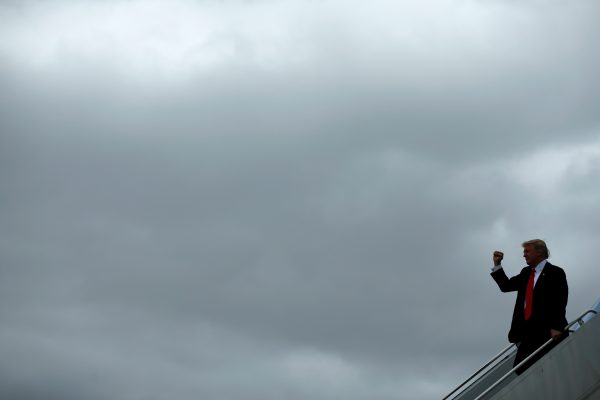The best response for East Asian economies to this may be surprising: they should assiduously endeavour to do nothing.
The first step toward this conclusion is accepting a fact that many do not want to accept: the global economic system does not exist because ordinary people are committed to free exchange or because a core group of national elites can come together and cooperate on difficult political issues. It exists because the United States is willing to run large very large current account deficits.
To see this, suppose the United States did what the Trump trade policy document hints at, the President has previously suggested, organised labour in the United States and elsewhere has implicitly advocated for decades, and Warren Buffet has twice proposed. Suppose at some point during the Trump Administration, the United States moves to require trade balance.
The immediate problem would be what to do with the $500 billion in net goods and services exported to the United States which would be looking for a new outlet. Would the production-oriented economies in most of East Asia be willing and able to absorb much of it? Would they turn to the already struggling Eurozone? Or would trade barriers proliferate and volumes plummet?
That’s actually the easy part. The flip side of the US current account deficit is the supply of US dollars that pays for the ‘extra’ imports and flows into international finance. If the United States forces trade balance, the dollars disappear. The world would either quickly reject the dollar as reserve currency or a lack of dollars would increasingly inhibit trade over time.
Then what? The euro — the currency of Greece, Italy and Spain — is used three times as frequently? The SDR — which is based on nothing since the IMF produces nothing — somehow rises to reserve currency status? Perhaps Japan, Vietnam, South Korea, Australia and other East Asian nations hold non-convertible RMB and hope for the best, financially and politically.
All are highly risky choices. Most East Asian countries, from a big country like China to a little country like Singapore, have benefited enormously from dollar-based globalisation. Given a possibly protectionist Republican President, their primary goal should be to minimise the chances of the disaster scenario, where the world is pushed toward currency blocs.
The good news is the disaster scenario is not imminent and East Asian countries can help prevent it. While the Trump administration’s words have sometimes been radical, the main action to now has been to leave the Trans-Pacific Partnership, which may be painful diplomatically but is understandable economically. Tariffs have not been imposed; charges of currency manipulation have not been wielded as weapons.
The Trump administration has effectively offered time for East Asian countries to communicate priorities across the Pacific. Japanese Prime Minister Shinzo Abe stands out as taking the initiative in this regard, others should follow suit. President Trump speaks clearly of his preference for bilateral approaches. East Asia is free to differ but should not blame the United States if multilateral approaches then flounder.
It is almost certain that, starting later this year, the United States will erect trade barriers of some sort. These could be limited to a few sectors. New Secretary of Commerce Wilbur Ross has in the past identified steel, textiles and auto parts as unfairly targeted by foreign producers and he is likely to have jurisdiction in such areas
If US tariffs remain confined in scope, East Asian policymakers should resist retaliation. Retaliation might be justified when considering an issue narrowly. But it is also likely to provoke an administration that believes, with some reason, market access between the United States and East Asia has been unbalanced for decades.
Short-term restraint is the obvious call for East Asia. The harder part is that destabilising American action may loom larger rather than recede as time goes on. Trump can sidestep his protectionist promises if and only if the US job market improves. The key to that is long-overdue US corporate tax reform.
Right now, the most complete proposal for such reform includes border adjustment. This is a more serious threat to most East Asian economies than scattered sector tariffs. Still, the best option is to do nothing, at least initially. The reason is simple and powerful: exchange rates will adjust to offset most of the impact of border taxes. Instability will be short-term.
If accepting border adjustment feels like a serious strain, it could be worse. If the United States does not pass tax reform, the economy will merely inch ahead and President Trump will be increasingly attacked for failing to help workers. US policy at that point could become ugly and East Asia will be forced to retaliate.
Until then, the goal should be to strenuously avoid this path.
Derek Scissors is Scholar in Residence at the American Enterprise Institute, Washington DC.

